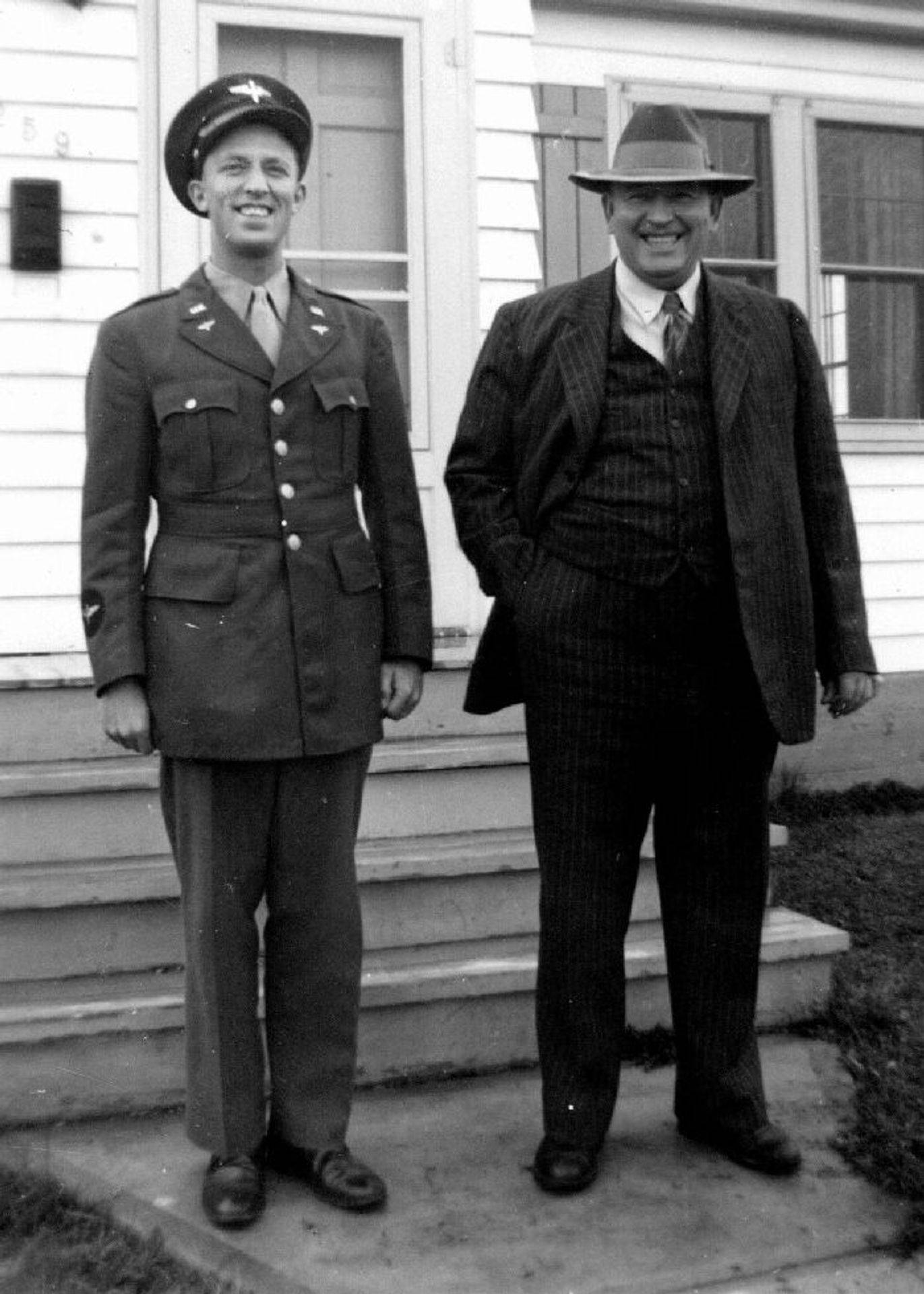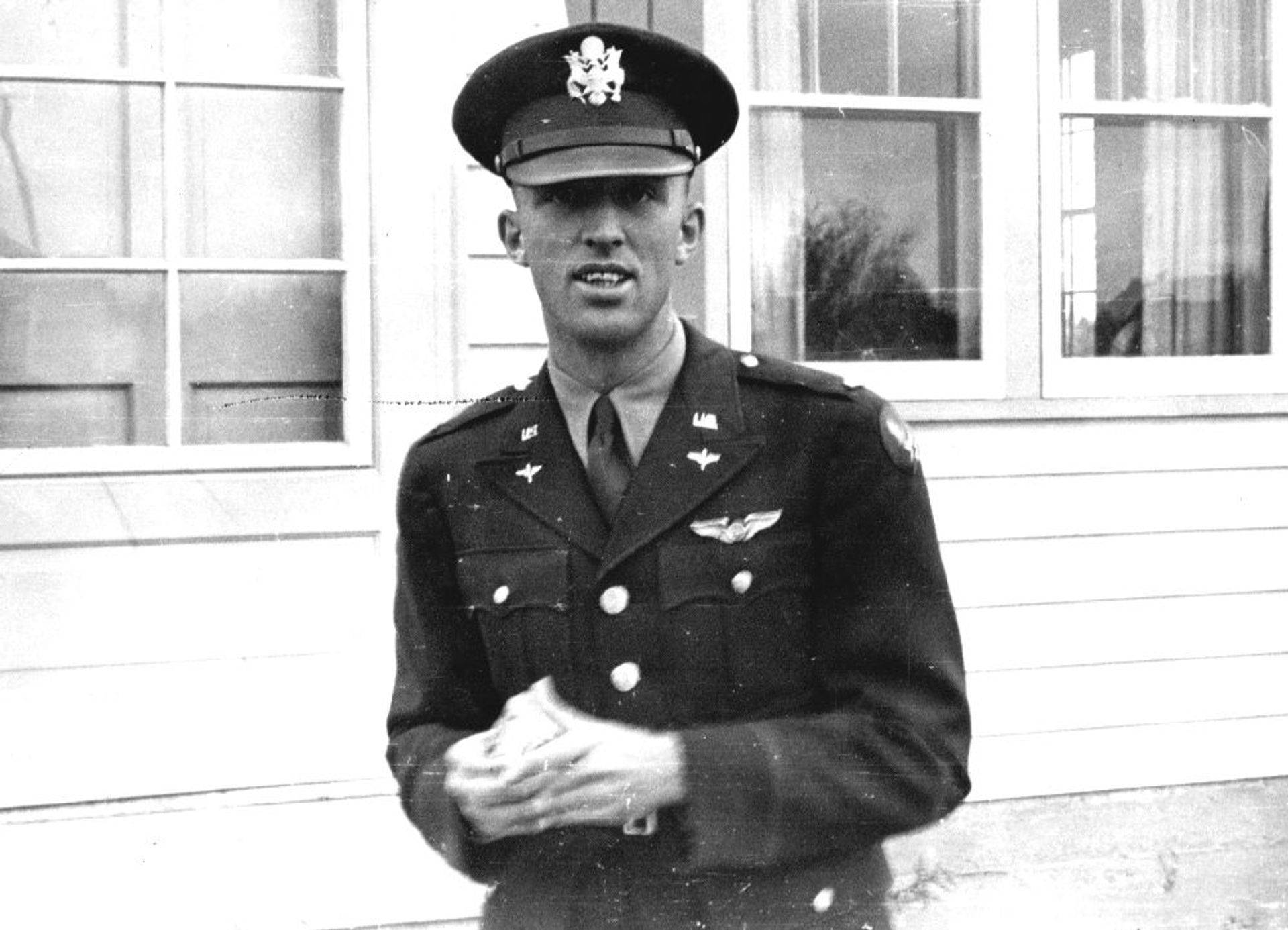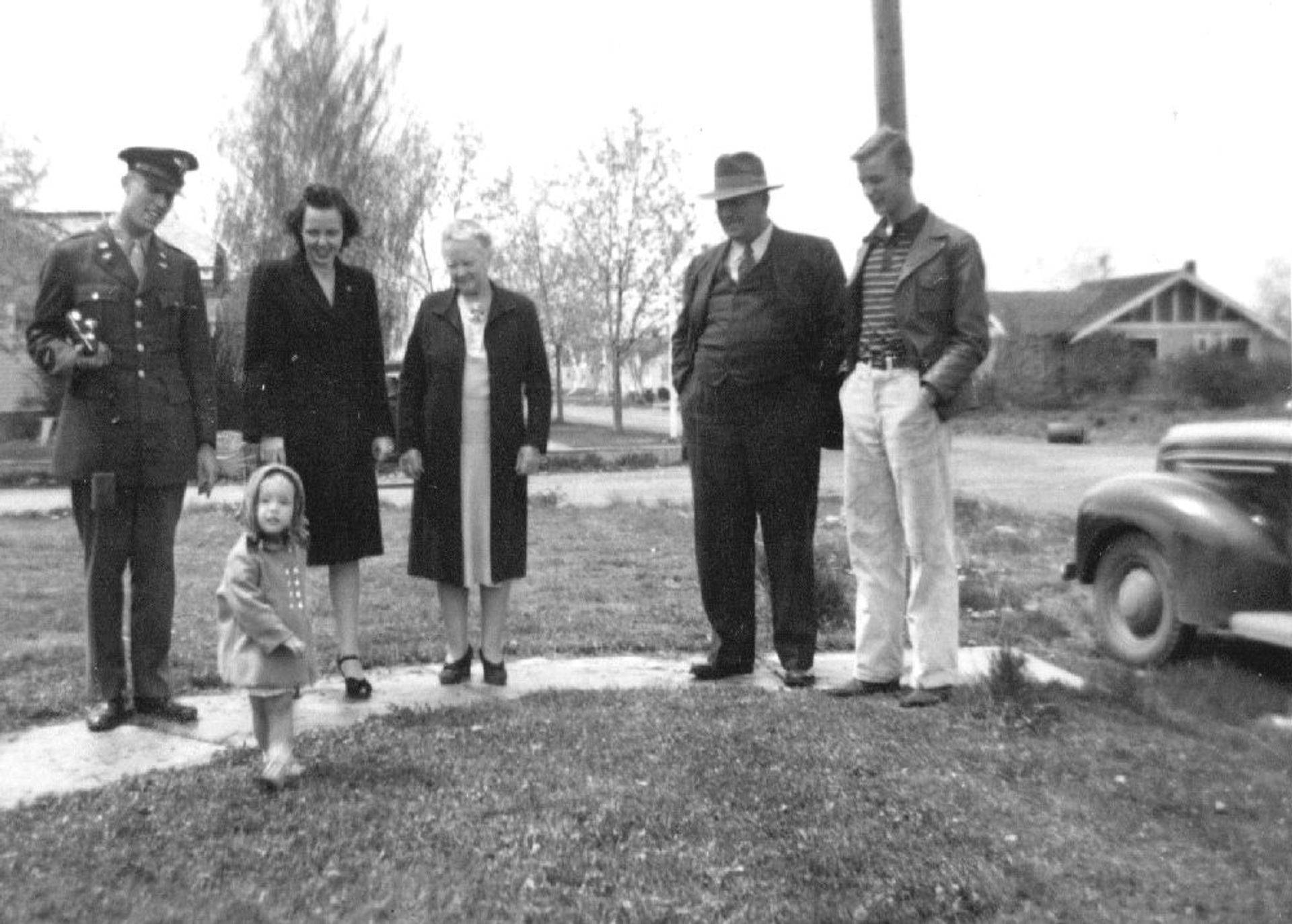Crew 46 – Assigned 754th Squadron – October 1943
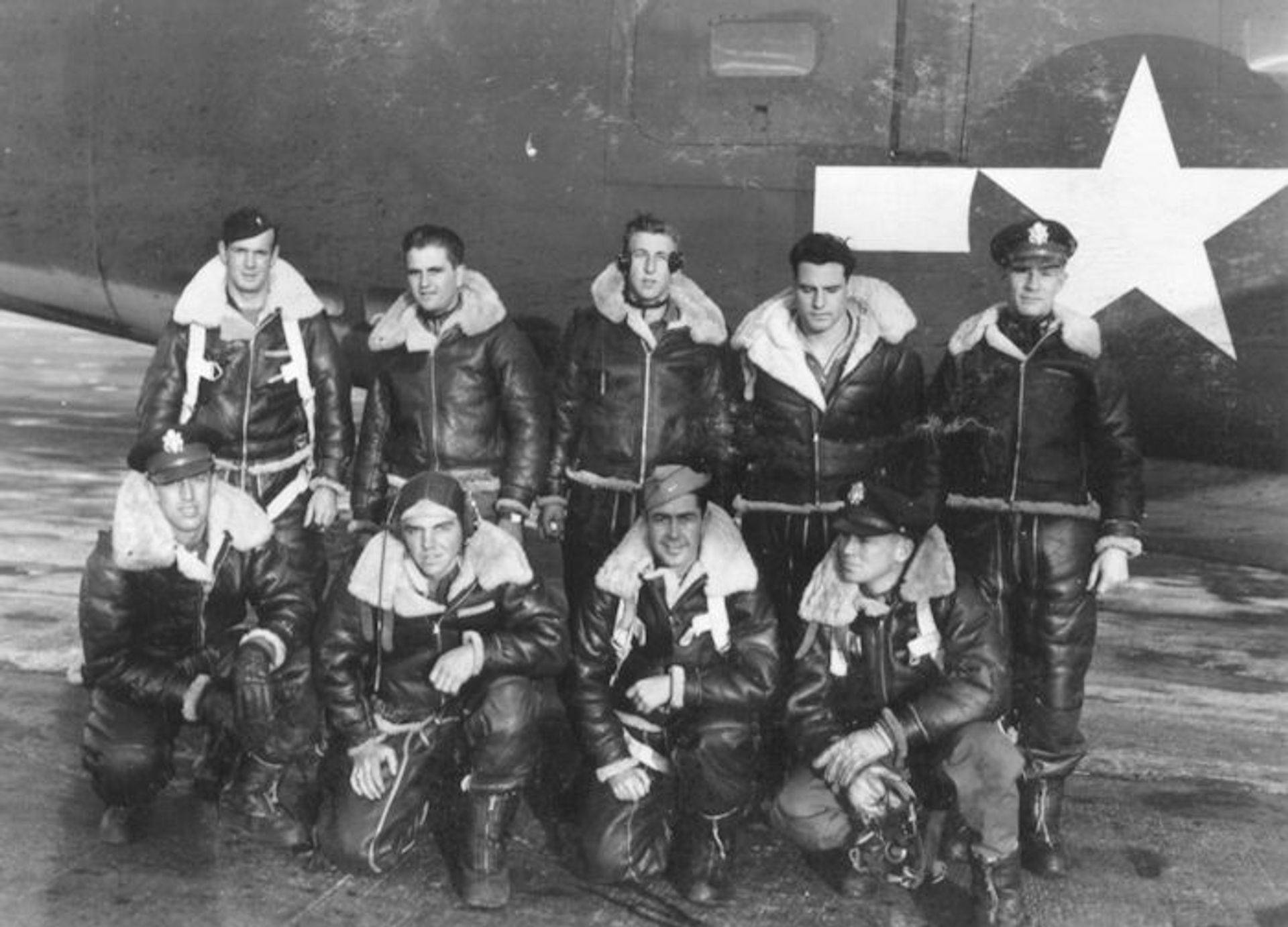
(Photo: AFRHA)
Shot down March 6, 1944 – MACR 3351
| Rank | Name | Serial # | Pos | Date | Status | Comments |
|---|---|---|---|---|---|---|
| 2Lt | Guy C Rogers | 0747322 | Pilot | 06-Mar-44 | POW | Stalag Luft I - Repatriated Jan 1945 |
| 2Lt | Francis O Proteau | 0811244 | Co-pilot | 06-Mar-44 | POW | Stalag Luft I |
| 2Lt | John S Hightower | 0811665 | Navigator | 06-Mar-44 | KIA | Missoula County, MT |
| F/O | Joseph S Root, Jr. | T1545 | Bombardier | 06-Mar-44 | KIA | Missoula County, MT |
| S/Sgt | Leroy Smith | 32391649 | Radio Operator | 06-Mar-44 | KIA | Essex County, NJ |
| S/Sgt | Raymond C Fiebiger | 19087765 | Aerial Gunner, 2/E | 06-Mar-44 | KIA | Sacramento, CA |
| Sgt | Marvin J Lademan | 16160272 | Ball Turret Gunner | 06-Mar-44 | MIA | Tablets of the Missing: Margraten |
| Sgt | Virgil O Morrow | 37231073 | Waist Gunner | 06-Mar-44 | KIA | Ardennes American Cemetery |
| Sgt | Sylvester W Kasprzynski | 15099862 | Nose Turret Gunner | 30-Dec-43 | UNK | SO298 Movement Order Tonopah |
| Sgt | Marvin T Wilson | 14098082 | Tail Turret Gunner | 06-Mar-44 | KIA | Ardennes American Cemetery |
An original crew, this must have been an extraordinarily close-nit group, especially the officers. Guy Rogers, John Hightower, and Joseph Root all hailed from Missoula, Montana. Sgt Sylvester W. Kasprzynski, gunner on the crew, was last mentioned in group records on a movement order from Tonopah, Nevada when the group was heading overseas. It is not known why he was removed from the crew. Sgt Harry Goldstein was not a member of this crew, but had recently been assigned to Curt Vogel’s Crew 74 in the 755th Squadron. It is possible that he volunteered for this mission. Crew 74 Radio Operator Bernie Doyle remembers Goldstein was “very eager”. The March 6, 1944 Berlin raid was the Rogers’ crew’s first mission. They were flying B-24H-15-FO 42-52515, possibly nicknamed Ford’s Folly.
Their aircraft was hit by flak, puncturing a fuel tank and starting a fire on the flight deck. It exploded very shortly afterwards blowing Rogers and Proteau out of the plane. The other eight crewmen never got out, the plane and crew came down in Lake Glindow, about 40km southwest of Berlin. A number of 458th crews witnessed this and told the debriefing officers about it. The bodies of several crewmen were still being found on the lake shore as late as June 1944.
Co-pilot, Lt Francis Proteau, stated that he was blown free of the ship when it exploded in mid-air. In his questionnaire on MACR 3351, Proteau stated that his last contact with Radio Operator, S/Sgt Leroy Smith was, “I told him just prior to the explosion to, ‘Get out!’, to which he replied, ‘I can’t!'” Proteau was attempting to open the top hatch to assist Engineer, S/Sgt Raymond Fiebiger out when the plane exploded.
Sgt Harry Goldstein’s body was never found and his name is on the Tablets of the Missing in Margraten Cemetery in the Netherlands.
2Lt Guy C. Rogers was captured and, due to his injuries, was taken to Obermassfeld Hospital #1249 (Stalag 9-C) Obermassfeld Thuringia, Germany. He was repatriated in early 1945. 2Lt Francis O. Proteau was also captured and spent the remainder of the war in Stalag Luft I on the Baltic Sea.
————————-
MACR 3351
No statement given
Lost on their first mission
| Date | Target | 458th Msn | Pilot Msn | Serial | RCL | Sqdn | A/C Msn | A/C Name | Comments |
|---|---|---|---|---|---|---|---|---|---|
| 06-Mar-44 | BERLIN/ERKNER | 4 | 1 | 42-52515 | H | Z5 | 1 | FORD'S FOLLY | DIRECT HIT - FLAK |
B-24H-15-FO 42-52515 Z5 H Ford’s Folly
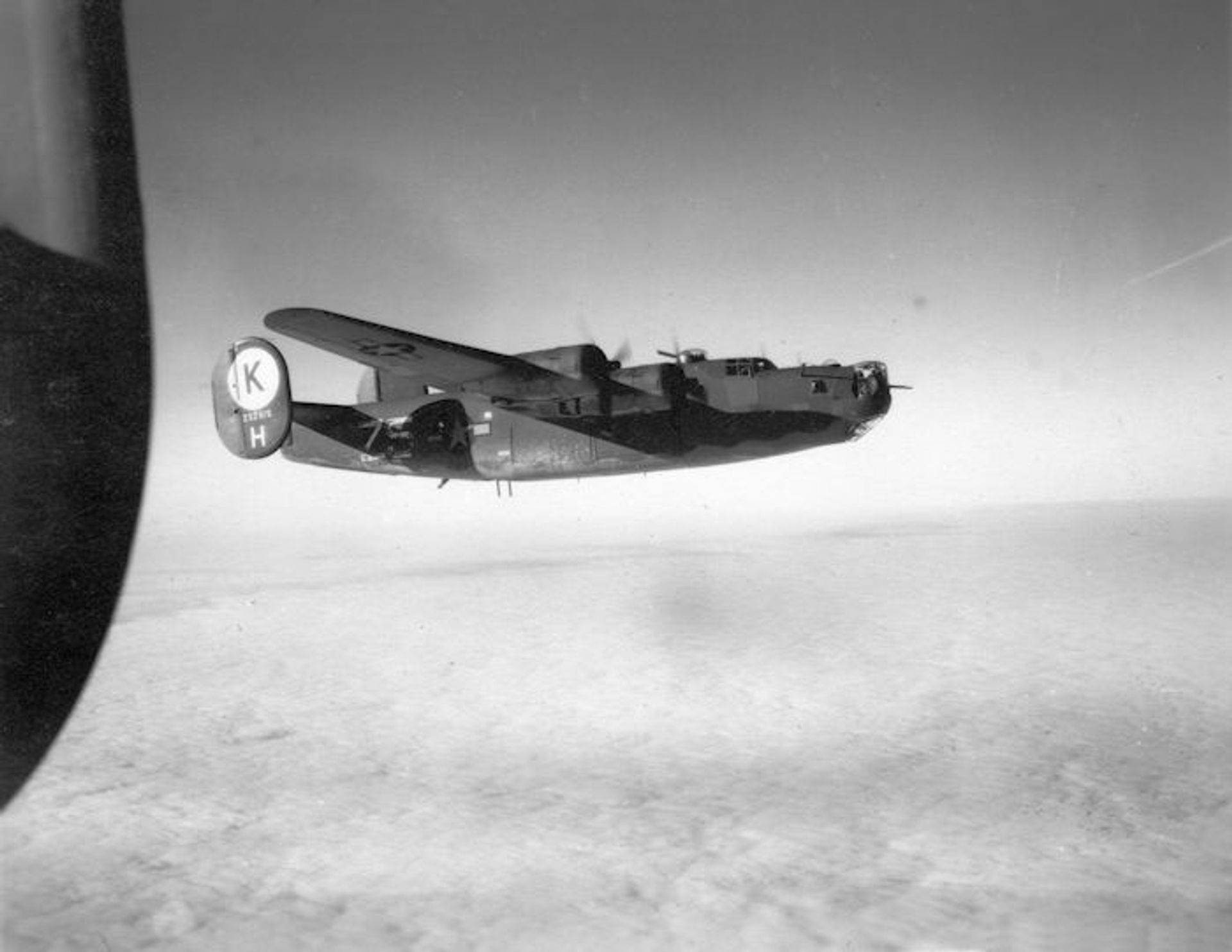
The only known picture of this aircraft, shortly after group and squadron markings had been applied in February 1944. The aircraft, said to have been named Ford’s Folly, flew only two missions, the first on February 24, 1944 on a diversion to the Dutch Coast; and one combat mission on which it was lost – March 6, 1944.
2Lt Guy Rogers letter to Sgt Lademan’s mother
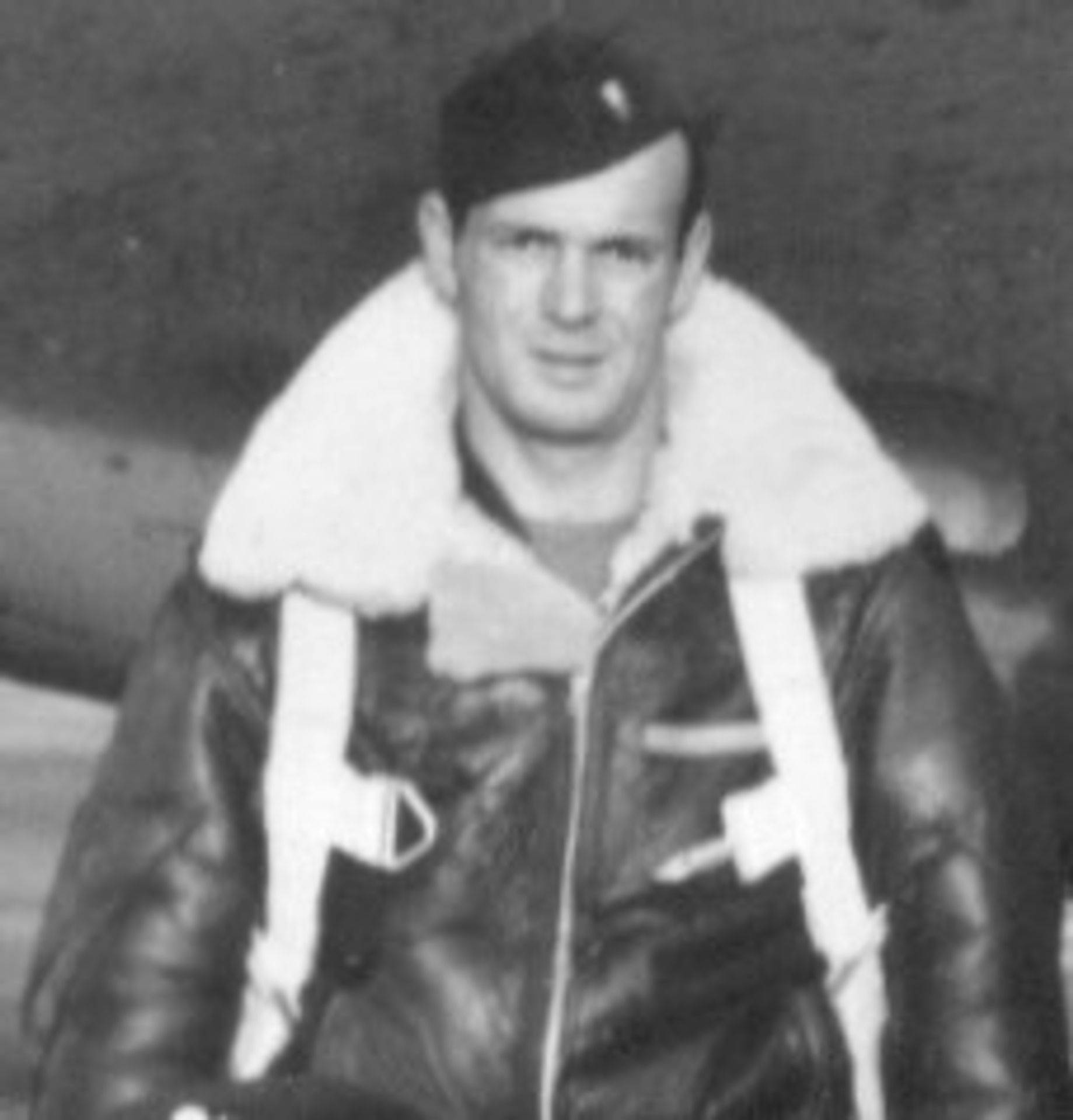
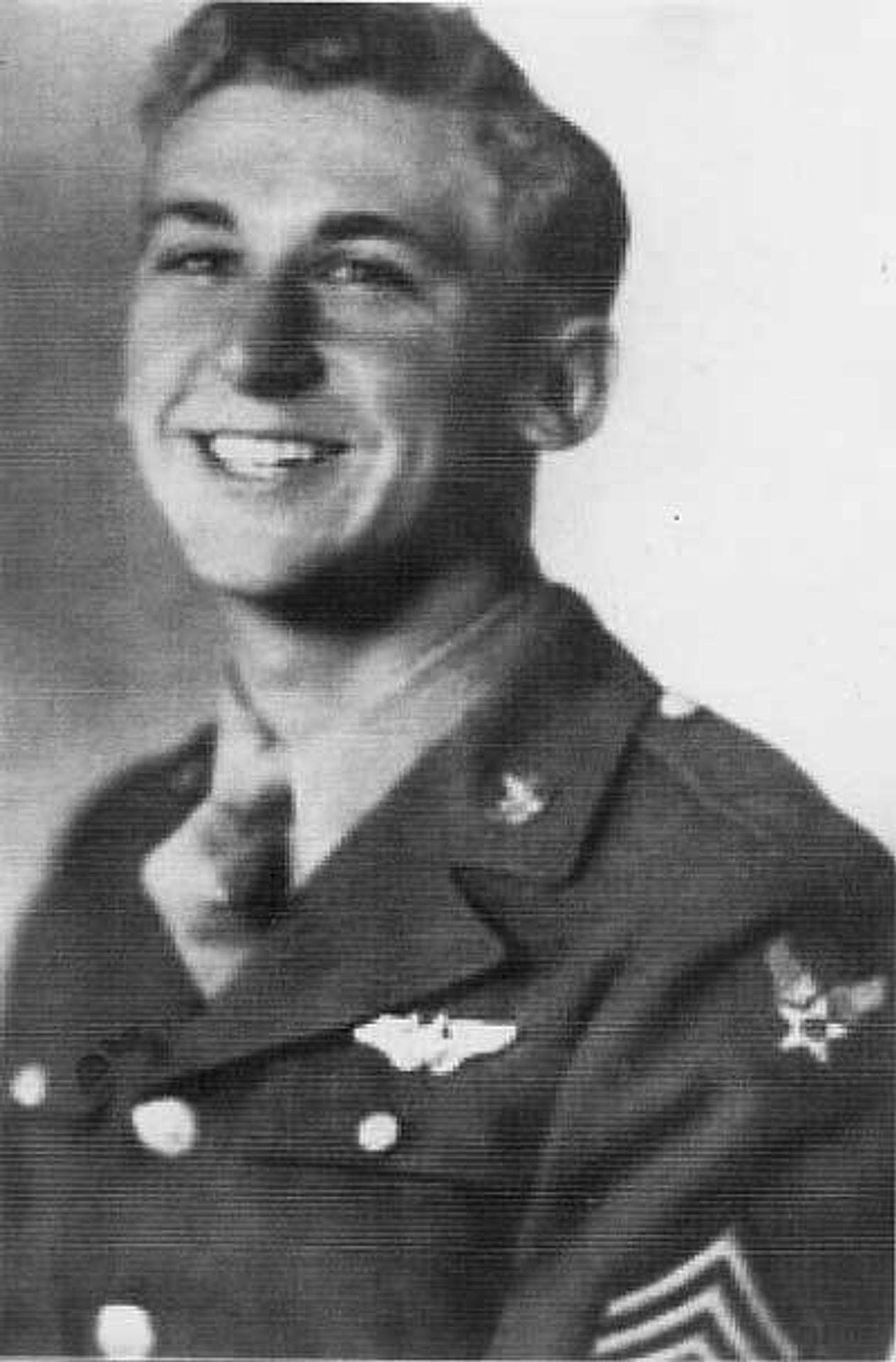
Lt Guy C. Rogers and Sgt Marvin J. Lademan
April 9, 1945
Dear Mrs. Lademan,
I know you’ve been awaiting this letter with much hope and because of that it’s very hard to write. I’m afraid I haven’t anything to tell you that’s very heartening, but will explain just what happened to us.
As you know our target that day was Berlin. We were unhit until immediately after dropping our bombs. Marvin was in the ball turret at the time. A rocket or incendiary shell came through the floor and exploded by my left arm. It immediately set fire to the airplane and my clothing at the same time. The nearest fire extinguisher was in the compartment near the radio. I left the co-pilot flying the ship and got out of my seat to go back after it. In getting out of the seat I fell on my hands and knees just as the gasoline-soaked floor mat caught on fire. Just a few seconds later the airplane exploded – due to the gasoline in the wing tanks.
I had no way of notifying anyone because the shell had destroyed [illegible] everyone had on a helmet and radio headset. We exploded too soon after being hit for anyone to have time to bail out, I feel certain.
Apparently the co-pilot and myself didn’t receive the full force of the concussion because we were only blown out by the explosion. The co-pilot was completely unhurt, but I sustained facial burns and a broken leg which was later amputated. I later saw the co-pilot on the ground and although the Germans wouldn’t allow us to talk I did succeed in asking him if he’d seen any of the other boys. He said he had seen no one else. We were separated shortly afterwards and I didn’t see him again.
I tried to find some information about the rest of the boys while I was in Germany, but I was unsuccessful. The War Department was unable to give me any news either. I think it’s unlikely Marvin survived the explosion Mrs. Lademan, but I wouldn’t say it’s impossible. I know the suspense is worse than knowing, but my own case was too miraculous for me to be sure enough to say definitely that Marvin was killed. It seems improbable that he escaped, but I can’t feel sure. If he was killed, I know it was instantly. I talked with an English prisoner who was part of a rescue squad clearing a theatre in Coventry that had been bombed. There were over 200 people sitting upright in the theatre as normal as could be. The concussion had killed them and not left a mark on anyone. The concussion is worse than the airplane breaking up.
I thought a lot of Marvin, Mrs. Lademan. He was a fine boy and one to feel justly proud of. I know how you must feel and tho I can’t say definitely, my suggestion would be to expect the worst and if he does come back it will be all the more wonderful. I hope someday to be able to come and visit you and perhaps help you in some small way.
I assure you my heart goes out to you for your loss if such it may be. I feel it too, Mrs. Lademan. If you care to correspond with me in the future I would consider it an honor and enjoy it very much.
May God Bless You –
-Signed-
Lt. Guy C. Rogers
Letter generously supplied by Barbara Haman
Sgt Harry Goldstein
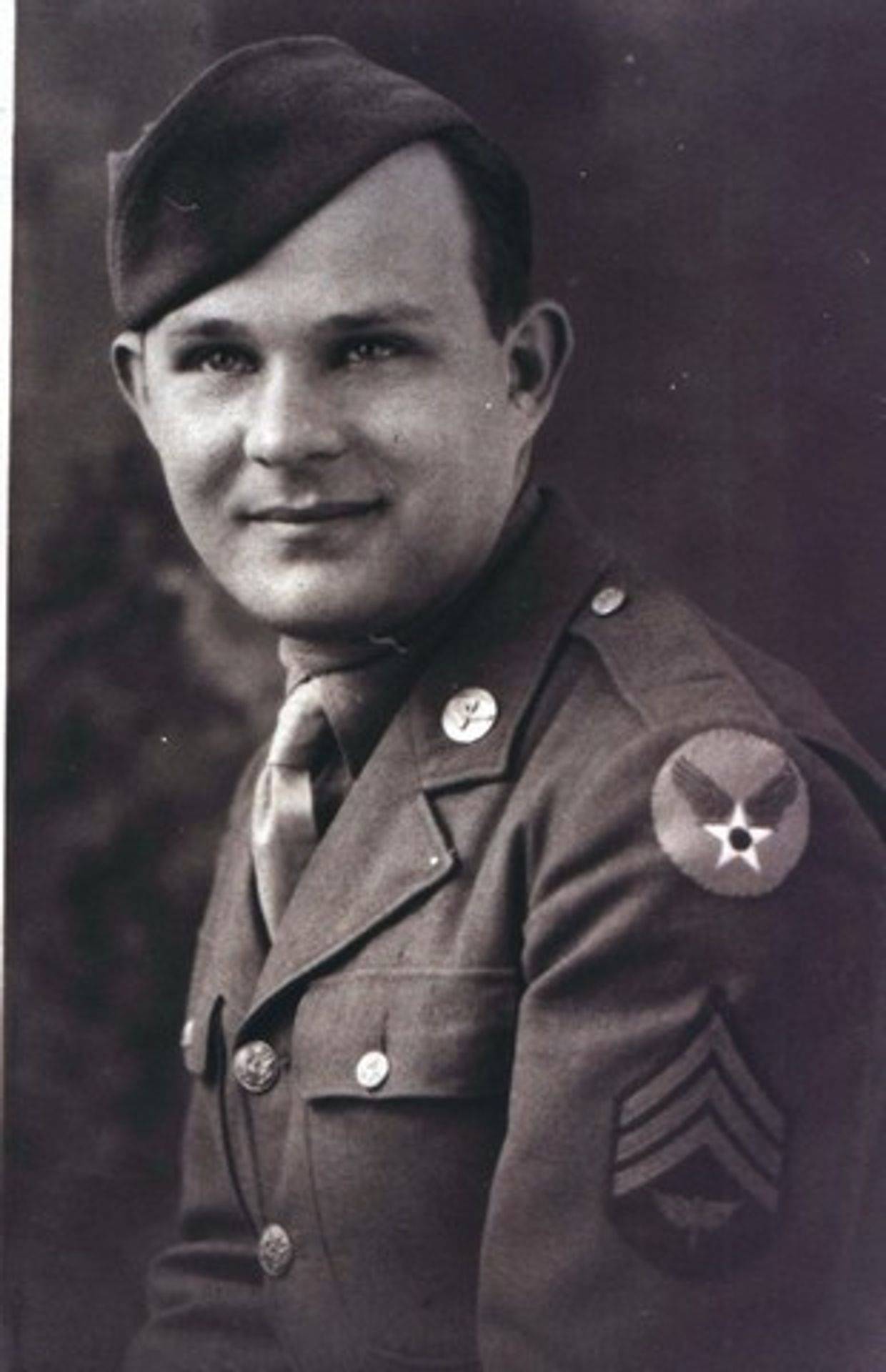
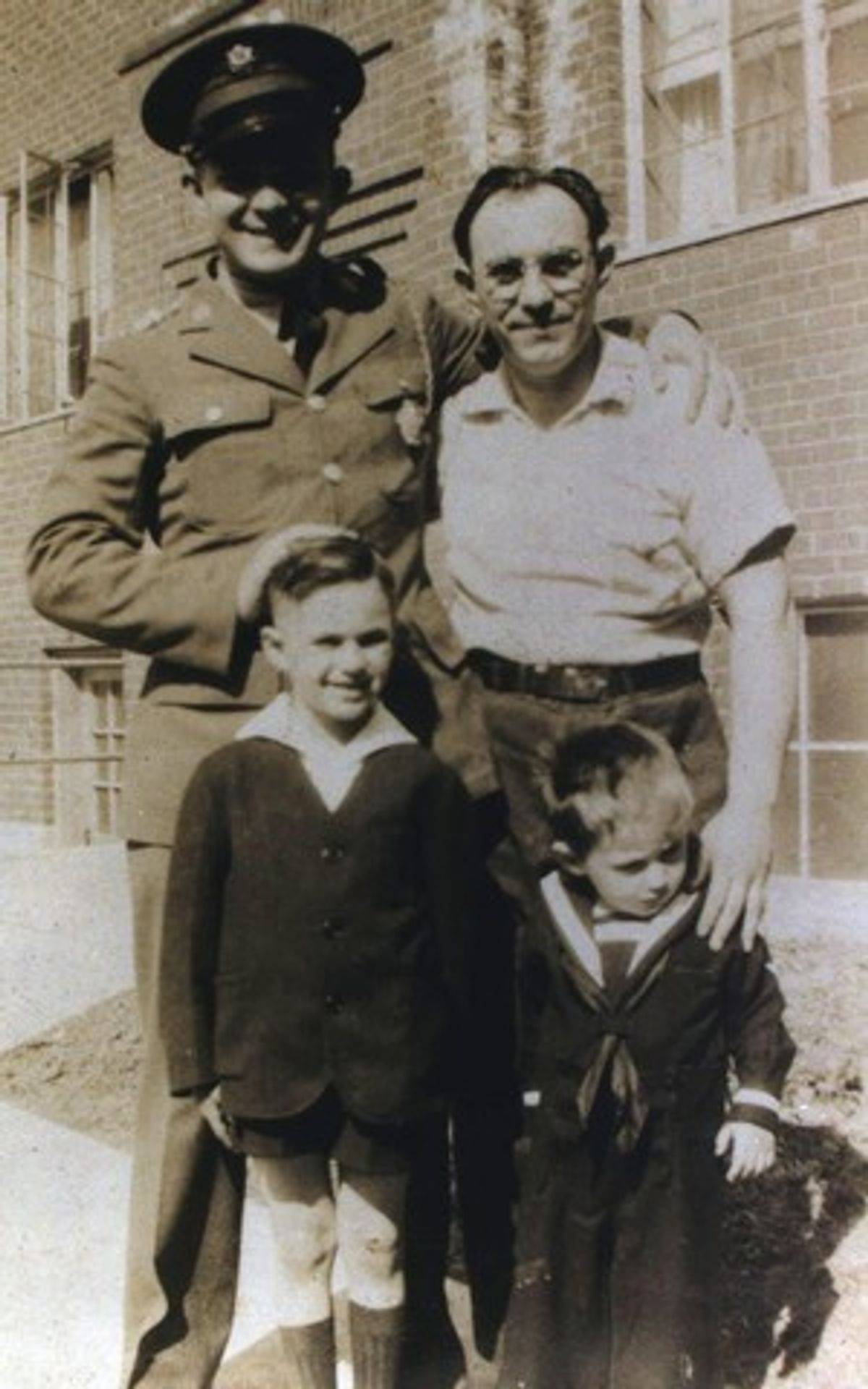
Sgt Harry Goldstein with his brother and nephews prior to going overseas.
Photos: Mel Goldstein
Recovered engine
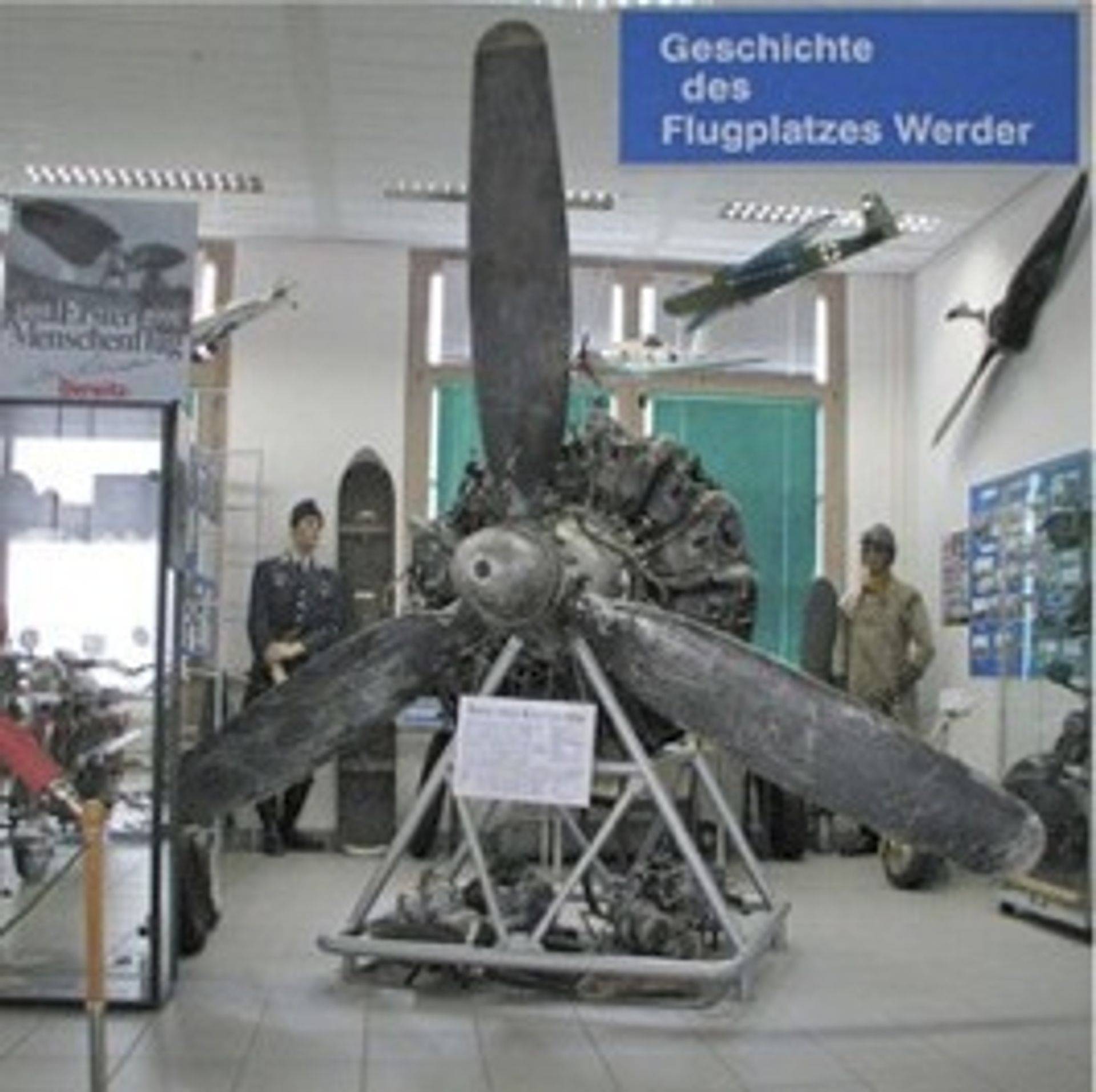
An email in September 2012 brought the following information to light:
As I adopted the grave of Sgt Marvin Lademan 458 bomb group. I found some very interesting info about the crash, eye witness report [translated below] and hopefully some pictures of the engines of Ford Follies B24…they laid down in the lake where the plane crashed. In 1999 the Germans salvaged three engines and 1 of them is in a museum.
Kind regards
Jan de Kock
Netherlands
“On 6 March 1944, the Americans flew the largest daylight raid on Berlin and the surrounding industrial areas. At 12.47 clock, there was general alarm in Berlin.
“The offensive formations consisted of four-engine B-17 (Flying Fortress), B-24 “Liberator” and long-range fighters. After the attack, about 120 machines came south out of Berlin, including over Potsdam area. There was heavy fire Flack and violent counter-attacks of the German fighters.
“At 13.45 clock flew a burning four-engine B-24 “Liberator” over the city Weder towards Glindow. Just five minutes later there was a massive explosion and the bomber crashed into the lake Glindower. Some crew members were thrown out. Two of the parachute opened just yet and landed on the land, other sank into the lake. According to the surviving pilot Rogers consisted the crew of ten men, most of them not experienced or long term trained…that why not many parachutes opened.
“The pilot landed badly injured on a piece of farmland near Petzow. Immediately there came a man on a horse under saddle and tried to kill the pilot with his horse.. Of course, the animal refused. It was the owner of the field, who was also known for his behavior and even harmless mushroom pickers drove the gun from his forest. He’s probably not escaped his punishment …
“The pilot Rogers came to interrogation by members of the airfield Werder in the air force hospital Berlin Reinickendorf. He lost his right leg after an emergency operation and was able to recover before the war ended in January 1945 in exchange for German pilots to return to America.The second survivor, the co-pilot came Proteau, a year after the war ended with a simple car accident [actually an air accident, see below].”
1999 succeeded the Zweiradmuseum Werder, who had gone in search of the traces of the past, with a lot of effort and skill, volunteer help and a little luck, the rescue of three engines of the B24 from Pratt & Whitney (14-cylindrical radial engines) from approximately seven meters depth. One of these engines is now a ground monument, also documented by numerous reports in the two-wheeler and Technology Museum Werder
2Lt Francis O. Proteau
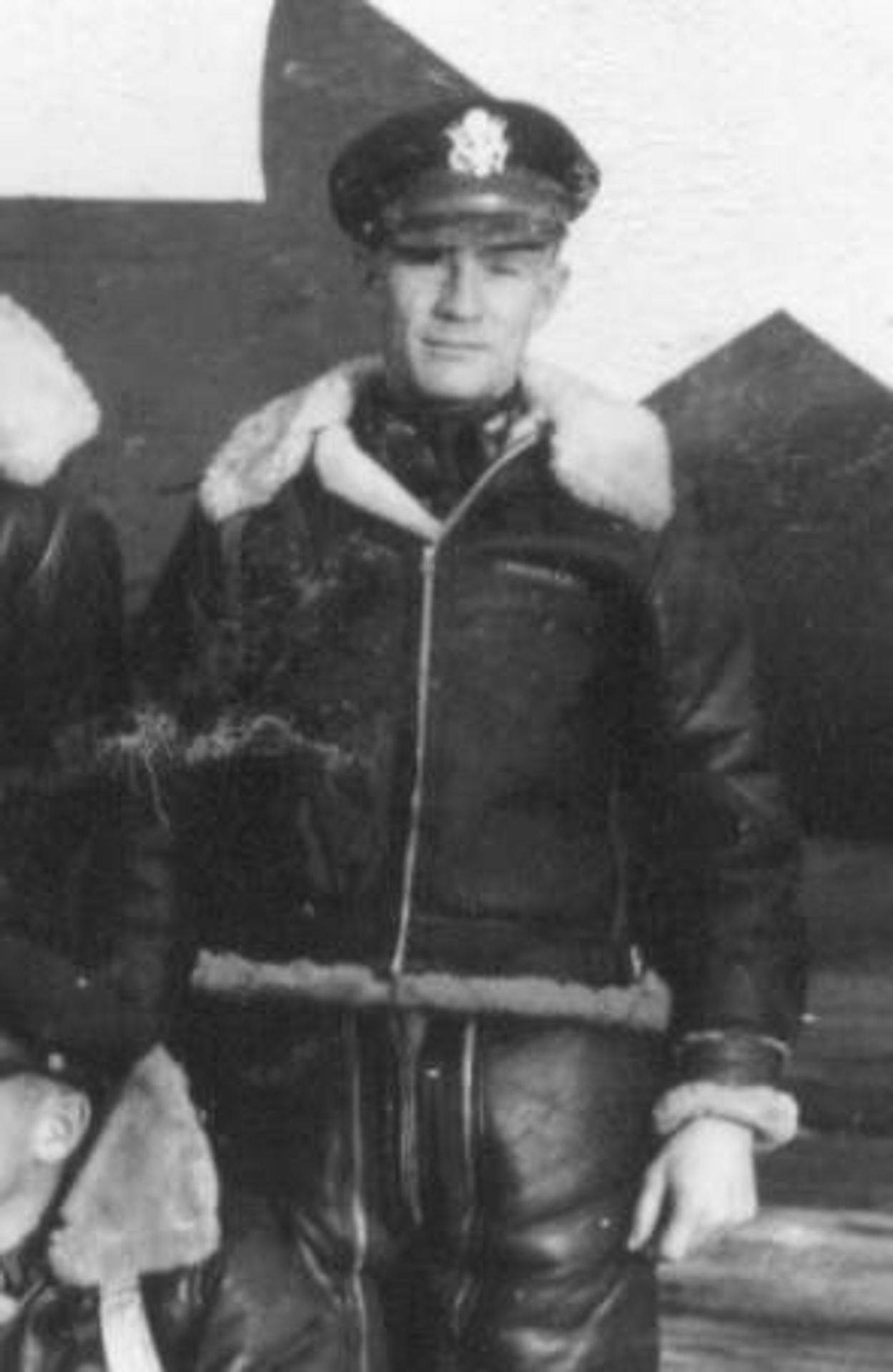
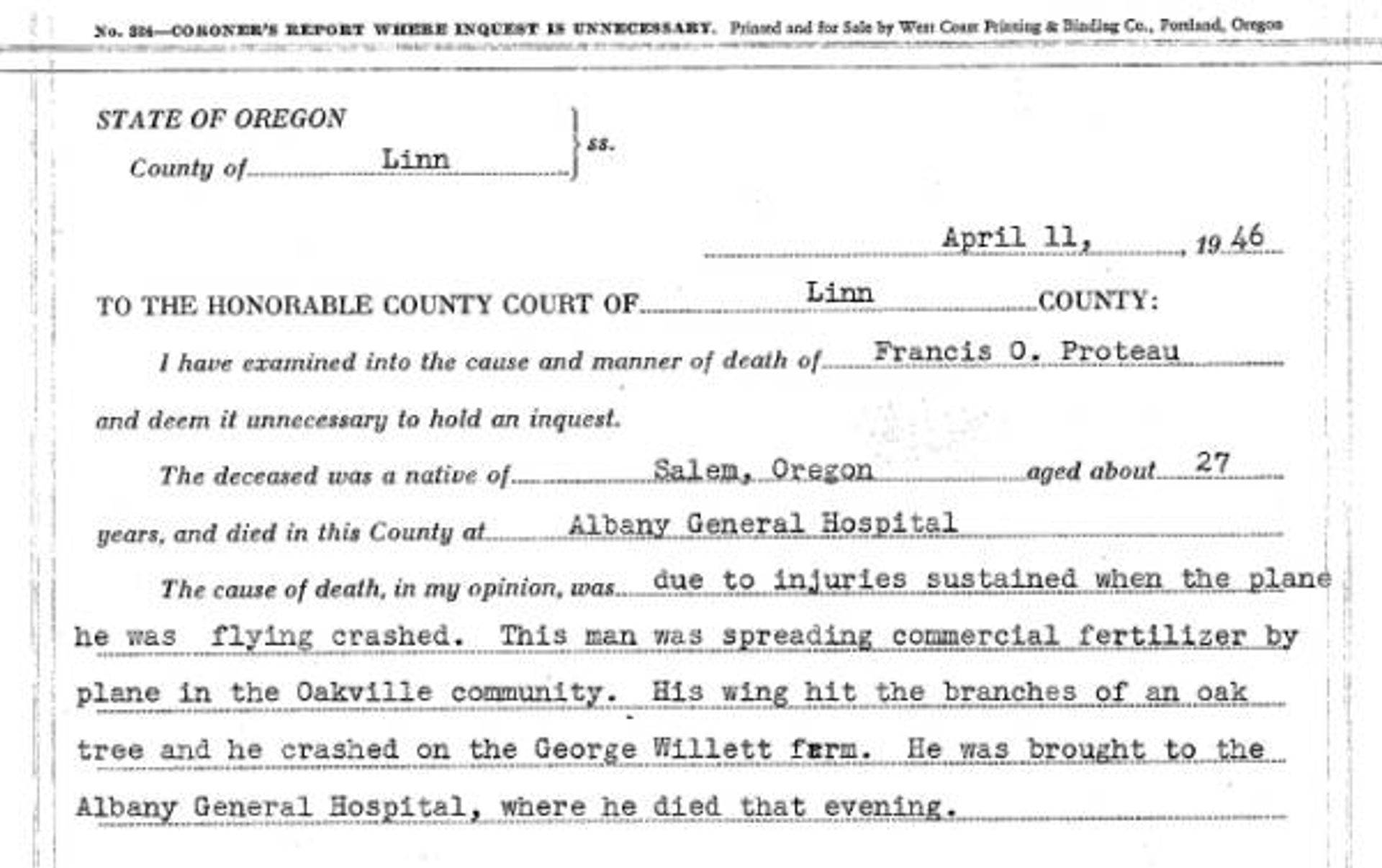
After the war, Francis Proteau returned home. Not quite a year after being liberated from Stalag Luft I, he was killed in an airplane accident while crop dusting.
Proteau’s father, George, and younger brother, Lawrence, were civilians working on Wake Island, building an airstrip and other military installations for the U.S. Navy. The Japanese attacked Wake mere hours after Pearl Harbor was attacked. The Americans, civilian and military, held out for over two weeks, at which time they surrendered. George and Lawrence Proteau were among those sent to Japan where they were consigned to a slave-labor camp (Fukuoka No. 18-B near Sasebo) and forced to build the Soto Dam. From the diary of another prisoner, Leo W. Wilcox: “30 March 1942—Geo. Proteau died at 5 A.M. this date. Four days ago his son died [Laurence Proteau]. The old man was very weak and had a bad heart”
[Note: The transcriber of the Wilcox diary confused 1943 with 1942; the Proteaus died in March 1943.]
Thank you, Jerry Leone, for finding this information.
Sgt Virgil O. Morrow – Ardennes American Cemetery
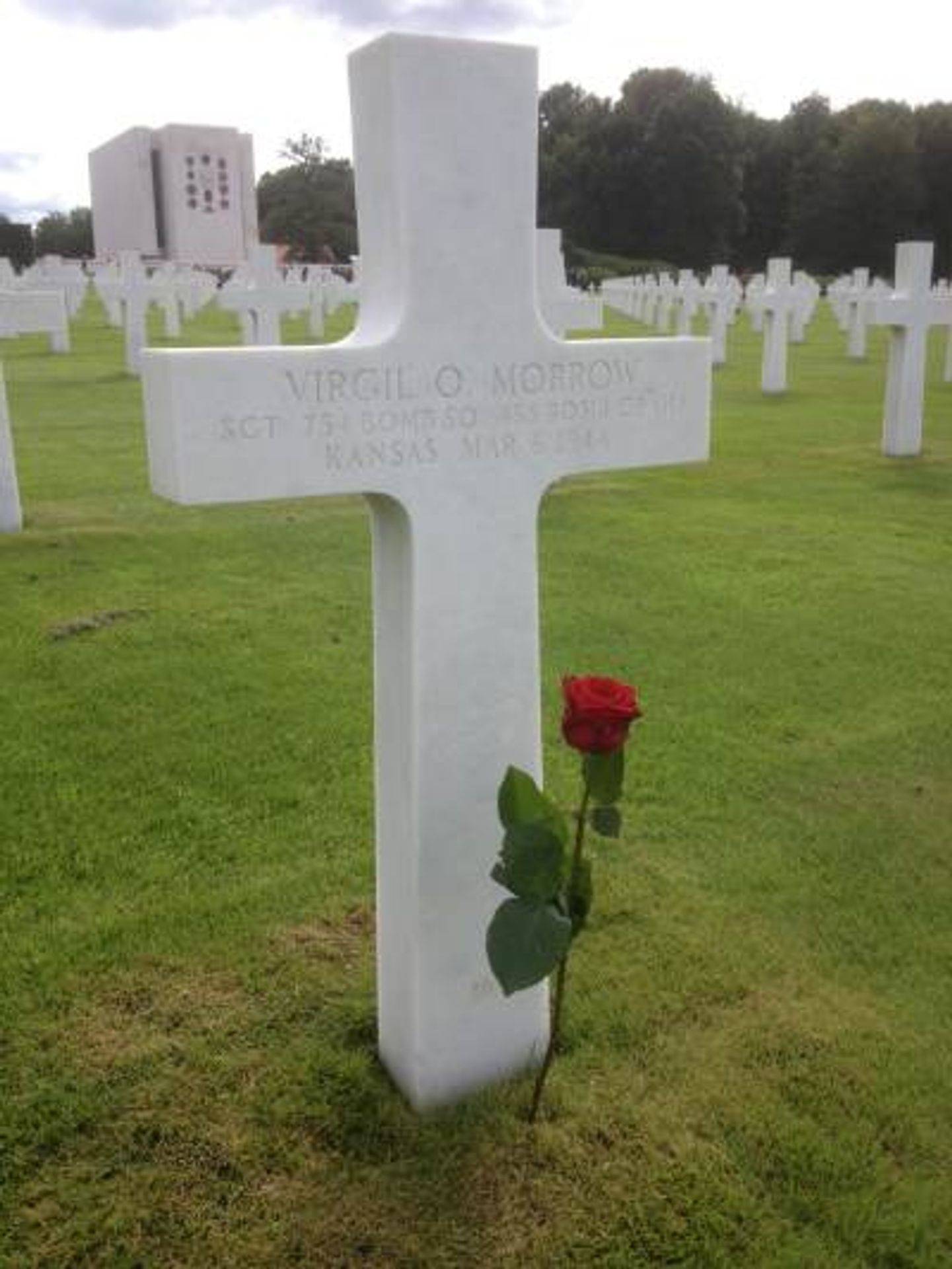
Maintained by Kristof De Geyter
Sgt Marvin Thrower Wilson – Ardennes American Cemetery
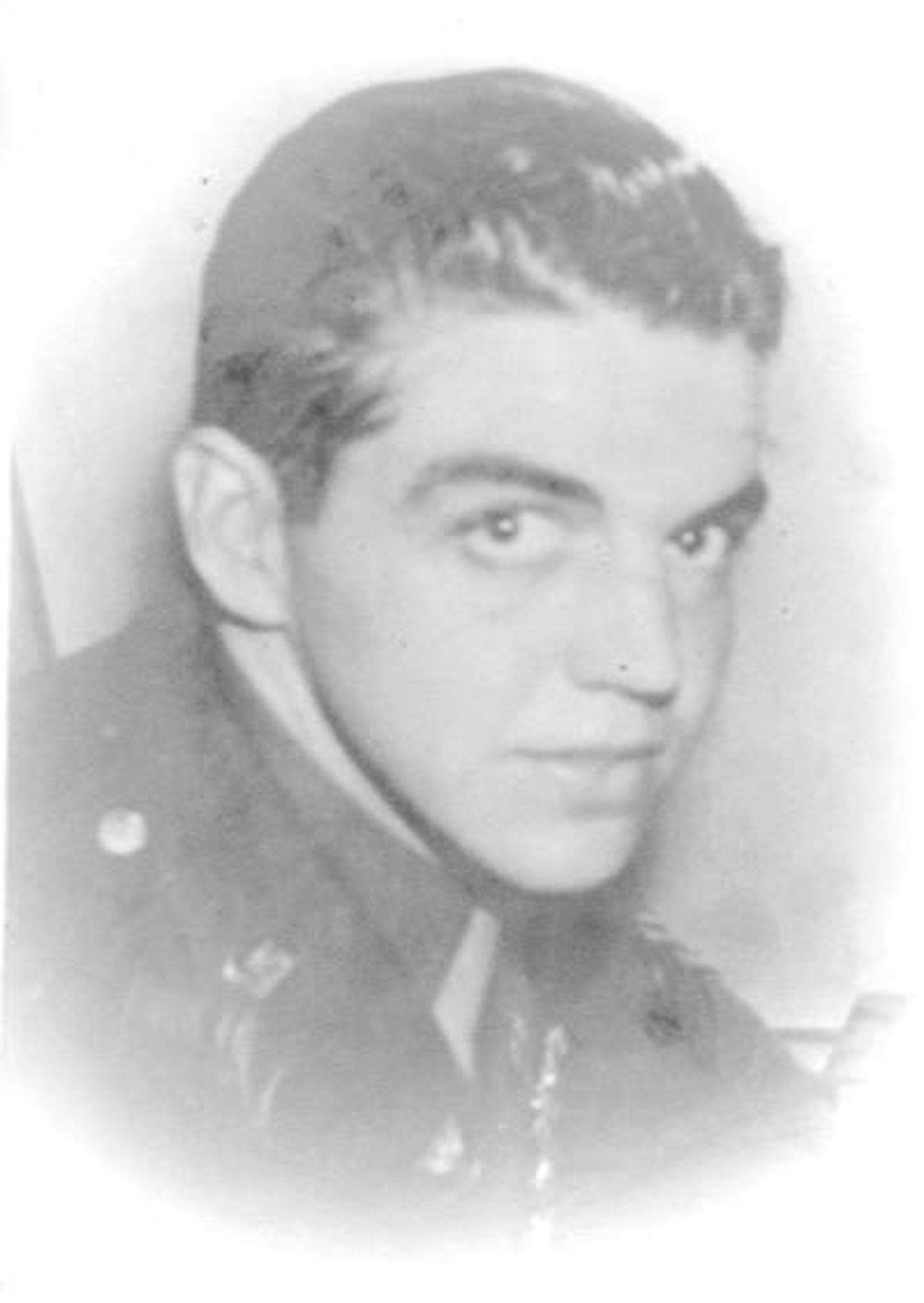
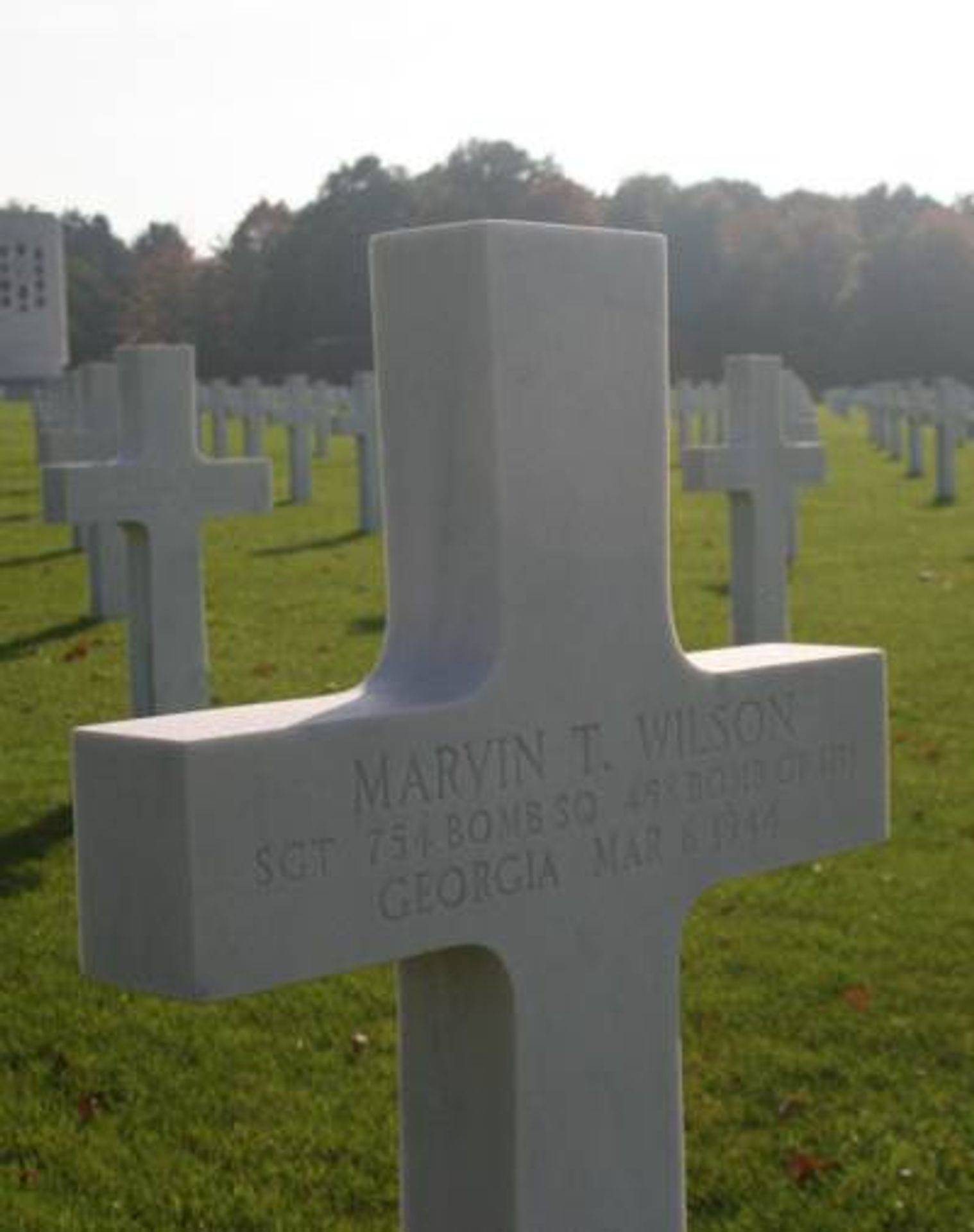
Photos: Rebecca Nagle and Joël Van Doren
2Lt John Stanford Hightower
